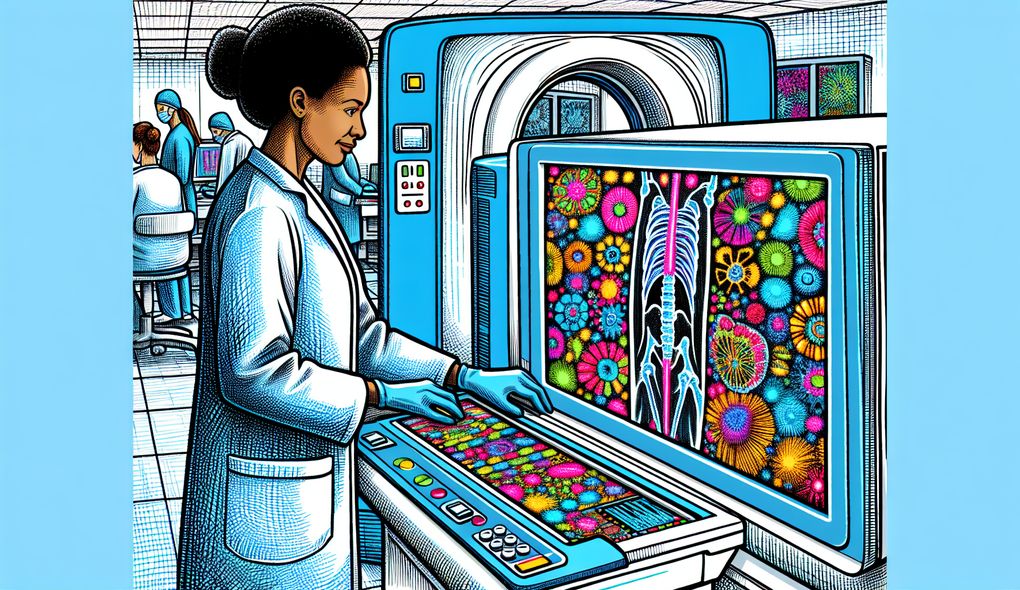How do you ensure accurate record-keeping of patient exams and imaging procedures?
JUNIOR LEVEL

Sample answer to the question:
To ensure accurate record-keeping of patient exams and imaging procedures, I follow a systematic approach. First, I carefully document all relevant information such as the patient's name, date of birth, and medical history. During the exam, I take detailed notes on the imaging technique used, any abnormalities observed, and the radiologist's interpretation. After the procedure, I enter all this information into the radiology information system (RIS). I also double-check the accuracy of the data before submitting it to ensure there are no errors or omissions. Additionally, I maintain a physical logbook as a backup record, which includes the date, time, and details of each exam performed. By implementing these practices, I can ensure the accuracy and completeness of record-keeping for patient exams and imaging procedures.
Here is a more solid answer:
Ensuring accurate record-keeping of patient exams and imaging procedures requires a combination of technical knowledge and organizational skills. Firstly, I rely on my extensive familiarity with radiology information systems (RIS) and picture archiving and communication systems (PACS). I am proficient in using these systems to input and retrieve patient data, imaging orders, and exam results. I understand the importance of accurately documenting patient information, such as name, medical record number, and exam details. To maintain attention to detail, I carefully cross-reference the patient's information with their identification wristband to ensure accuracy. Additionally, I follow a systematic approach to record-keeping. I create a comprehensive record that includes the patient's demographic details, the date and time of the exam, and the imaging techniques used. I also note any relevant clinical history or special considerations. Throughout the process, I pay meticulous attention to detail, ensuring that all information is entered correctly and completely. By implementing these practices, I can confidently state that I have maintained accurate record-keeping of patient exams and imaging procedures throughout my career.
Why is this a more solid answer?
The solid answer builds upon the basic answer by providing more specific details and examples. It demonstrates the candidate's knowledge of using radiology information systems and their attention to detail in maintaining accurate records. However, it could further improve by including some examples of how the candidate has overcome challenges or used their organizational skills in record-keeping.
An example of a exceptional answer:
Accurate record-keeping of patient exams and imaging procedures is crucial for providing quality healthcare. To ensure this, I have developed a systematic approach that encompasses various aspects. Firstly, I have honed my skills in working with radiology information systems (RIS) and picture archiving and communication systems (PACS). I am proficient in navigating these systems, efficiently inputting and retrieving patient information, orders, and results. I take extra care in verifying patient data, cross-referencing against their identification wristband and electronic health record to maintain accuracy. Additionally, I have implemented a comprehensive documentation process. This includes recording not only the patient's demographic information but also clinical history, any patient-specific considerations, and the specific imaging techniques employed. I have also established a diligent double-checking process to minimize errors and omissions. Furthermore, I recognize the importance of maintaining organized records. I categorize and label patient exams and imaging procedures in an easily retrievable manner. I have also ensured compliance with privacy regulations by implementing secure storage systems. Throughout my career, I have consistently demonstrated my ability to uphold accurate record-keeping, providing a reliable reference for patient care continuity, research, and quality improvement initiatives.
Why is this an exceptional answer?
The exceptional answer goes beyond the solid answer by providing even more specific details and examples. It showcases the candidate's in-depth knowledge and proficiency in using radiology information systems, as well as their commitment to accuracy and organization. The answer also highlights the candidate's understanding of privacy regulations and their dedication to maintaining secure and compliant record-keeping. Overall, this answer demonstrates a high level of expertise and dedication to ensuring accurate record-keeping of patient exams and imaging procedures.
How to prepare for this question:
- Familiarize yourself with different radiology information systems and picture archiving and communication systems. Practice navigating these systems to quickly input and retrieve patient information.
- Develop strong attention to detail by carefully cross-referencing patient data and verifying accuracy against identification wristbands and electronic health records.
- Create a systematic approach to record-keeping that includes comprehensive documentation of patient demographics, clinical history, relevant information, and imaging techniques.
- Demonstrate your organizational skills by categorizing and labeling patient exams and imaging procedures for easy retrieval.
- Stay updated on privacy regulations and develop secure storage systems to ensure compliance and protect patient data.
What are interviewers evaluating with this question?
- Knowledge of radiology information systems (RIS) and picture archiving and communication systems (PACS)
- Attention to detail
- Organizational skills

